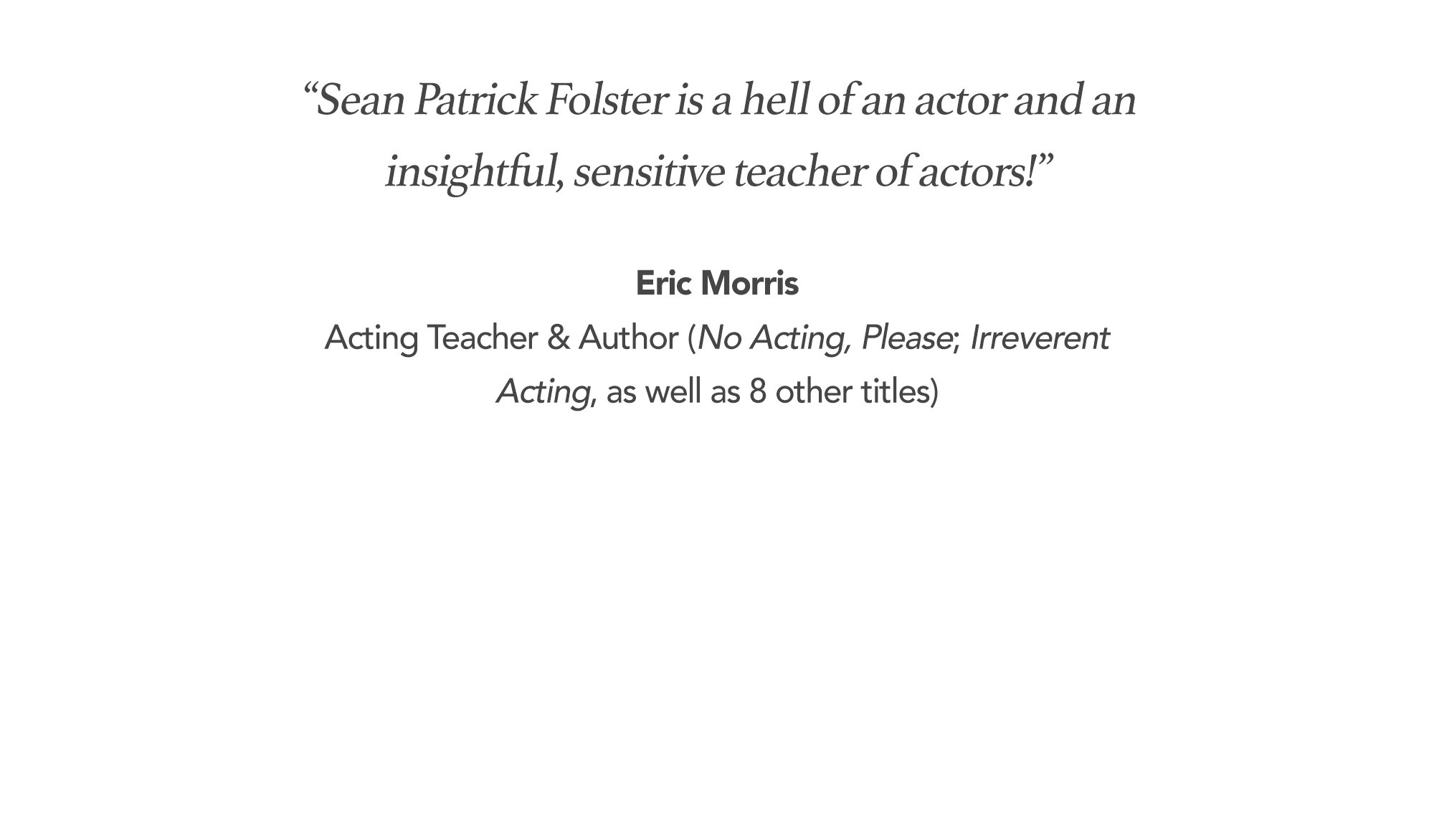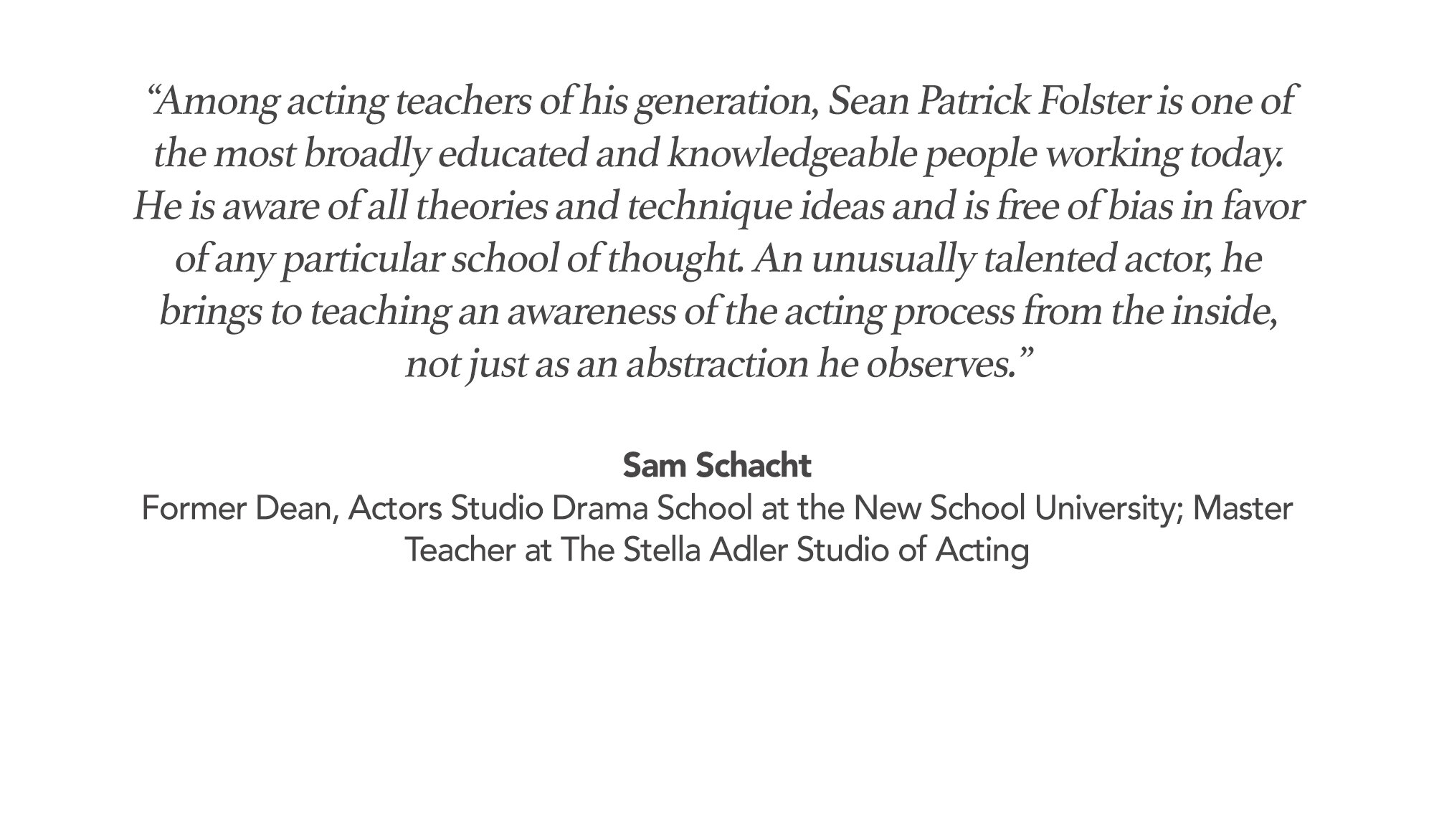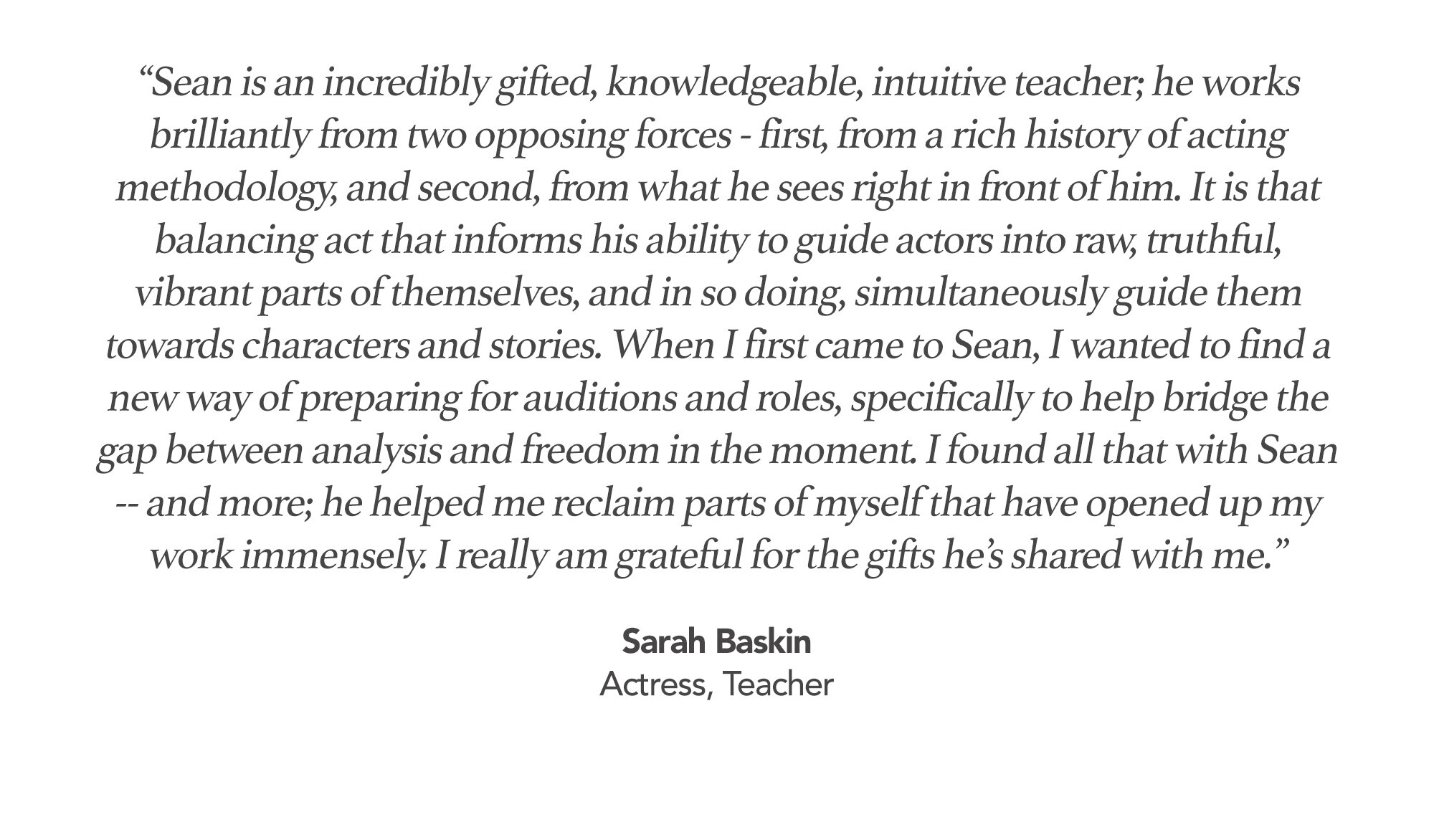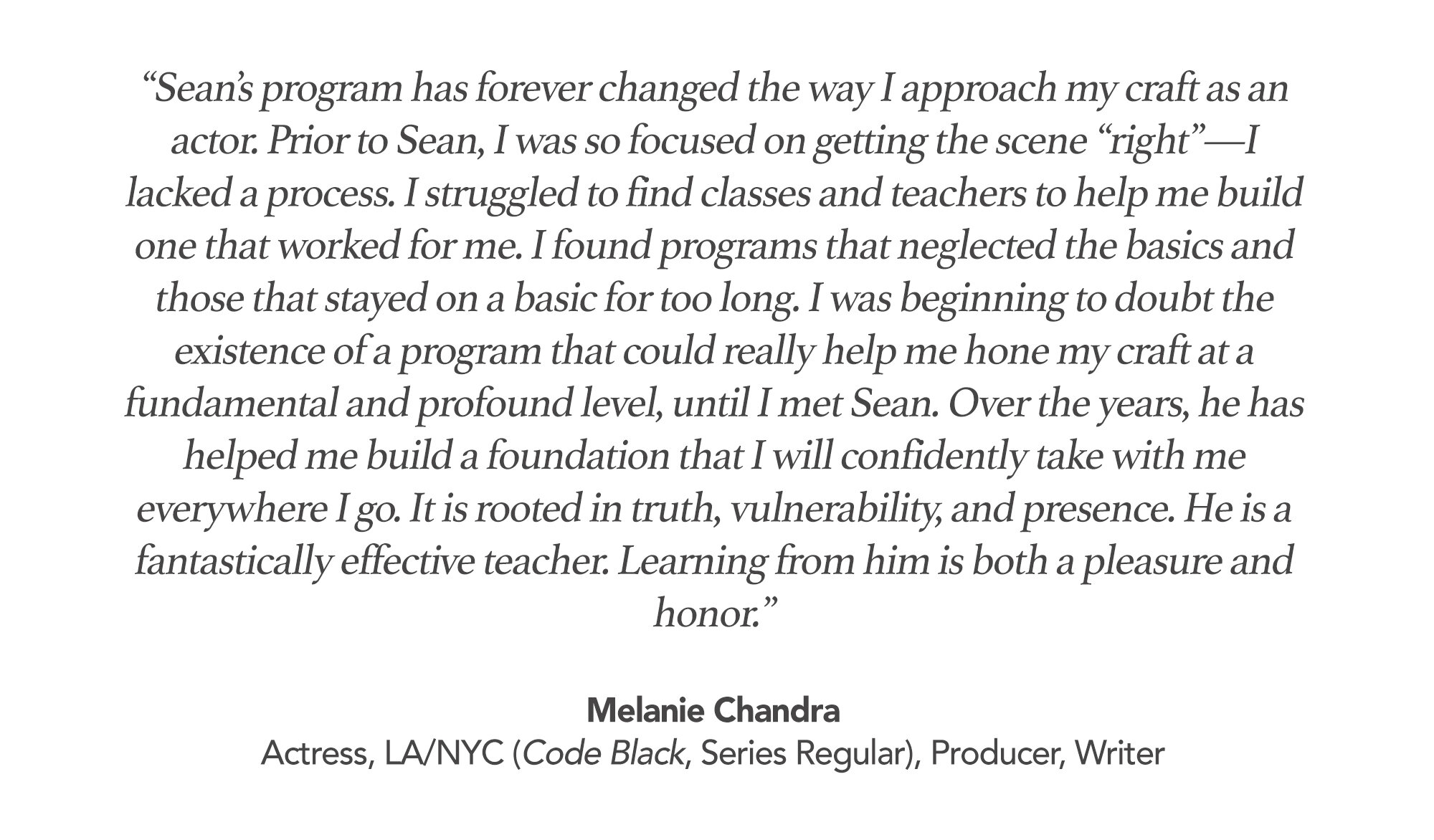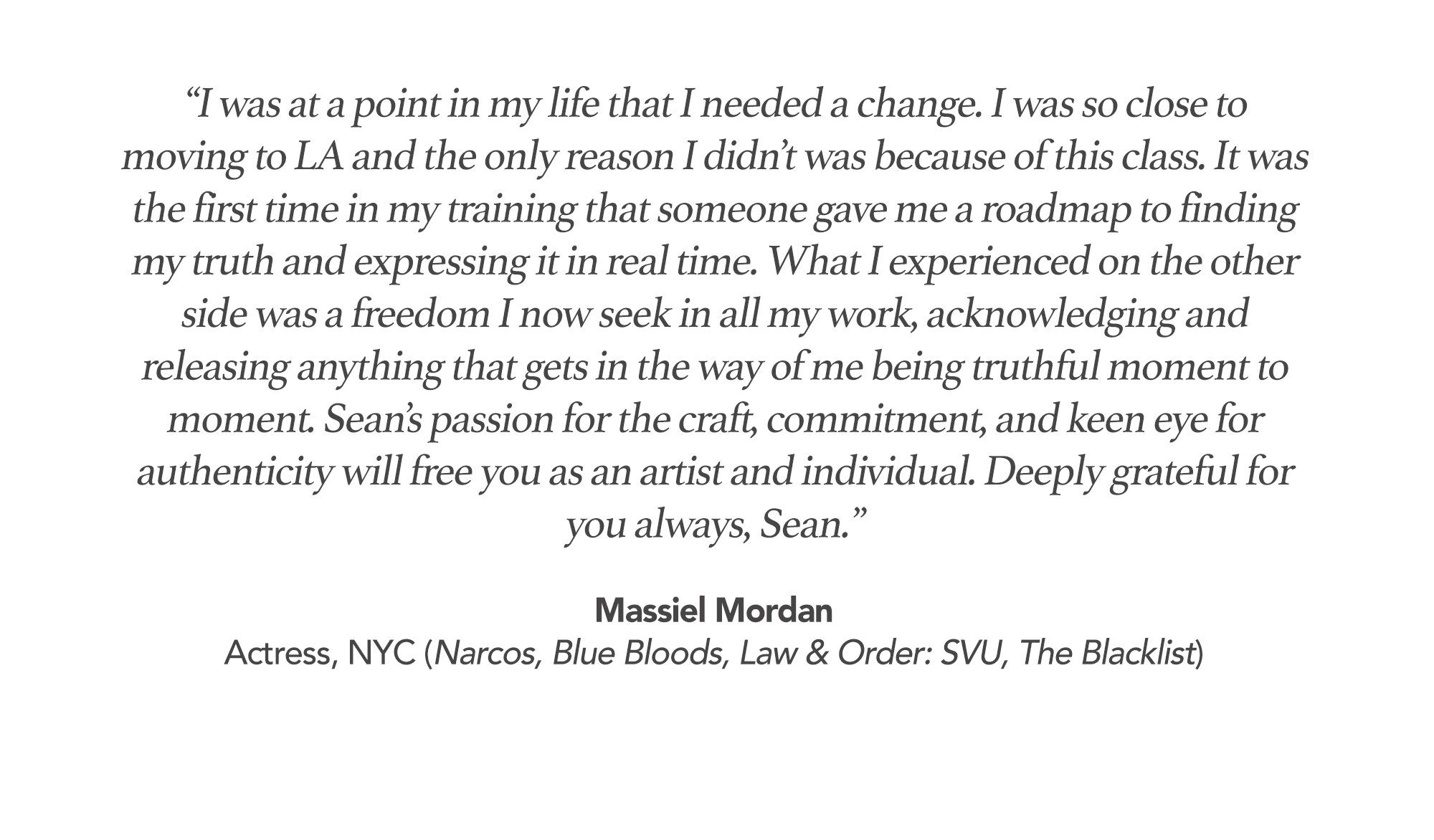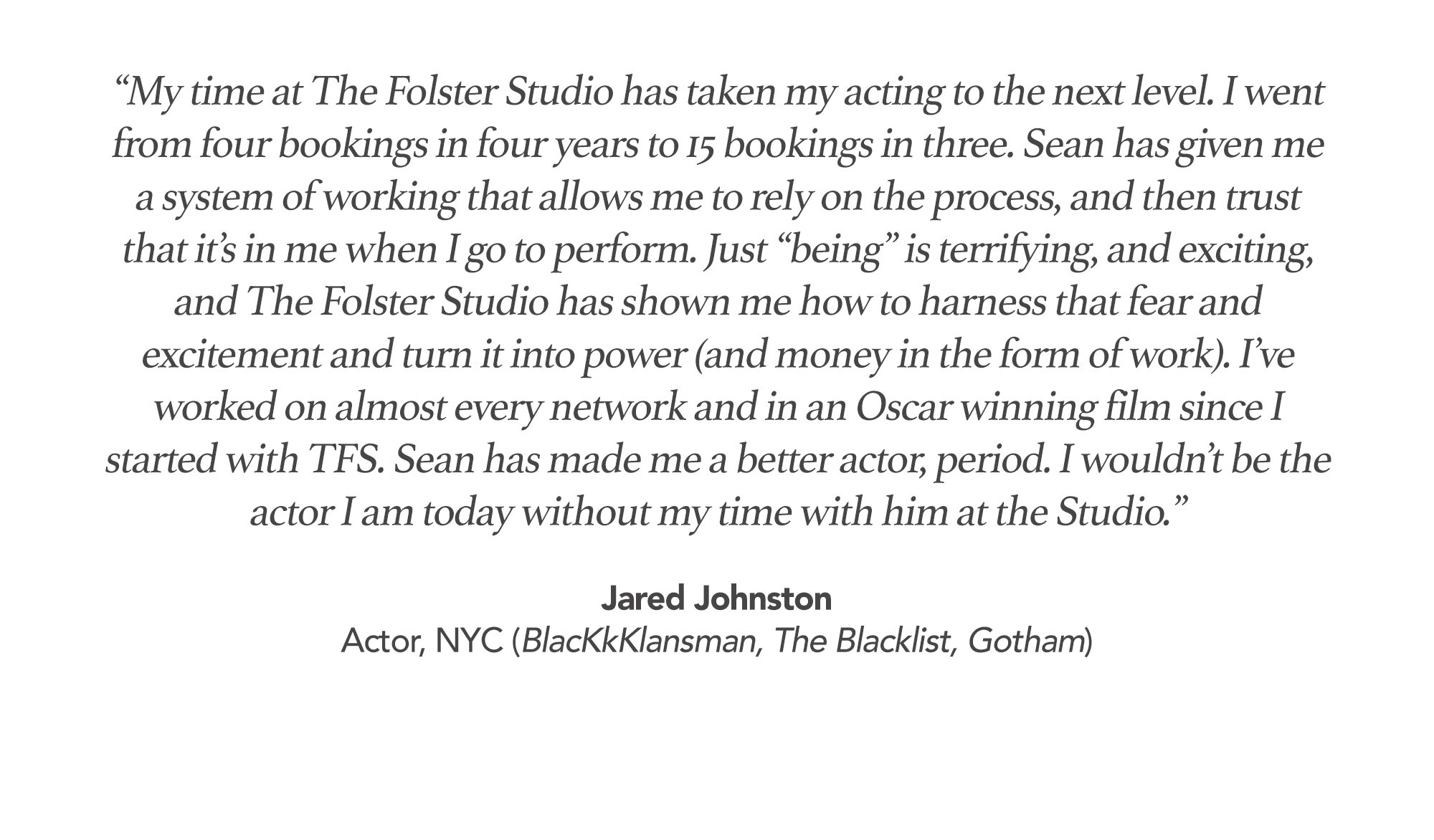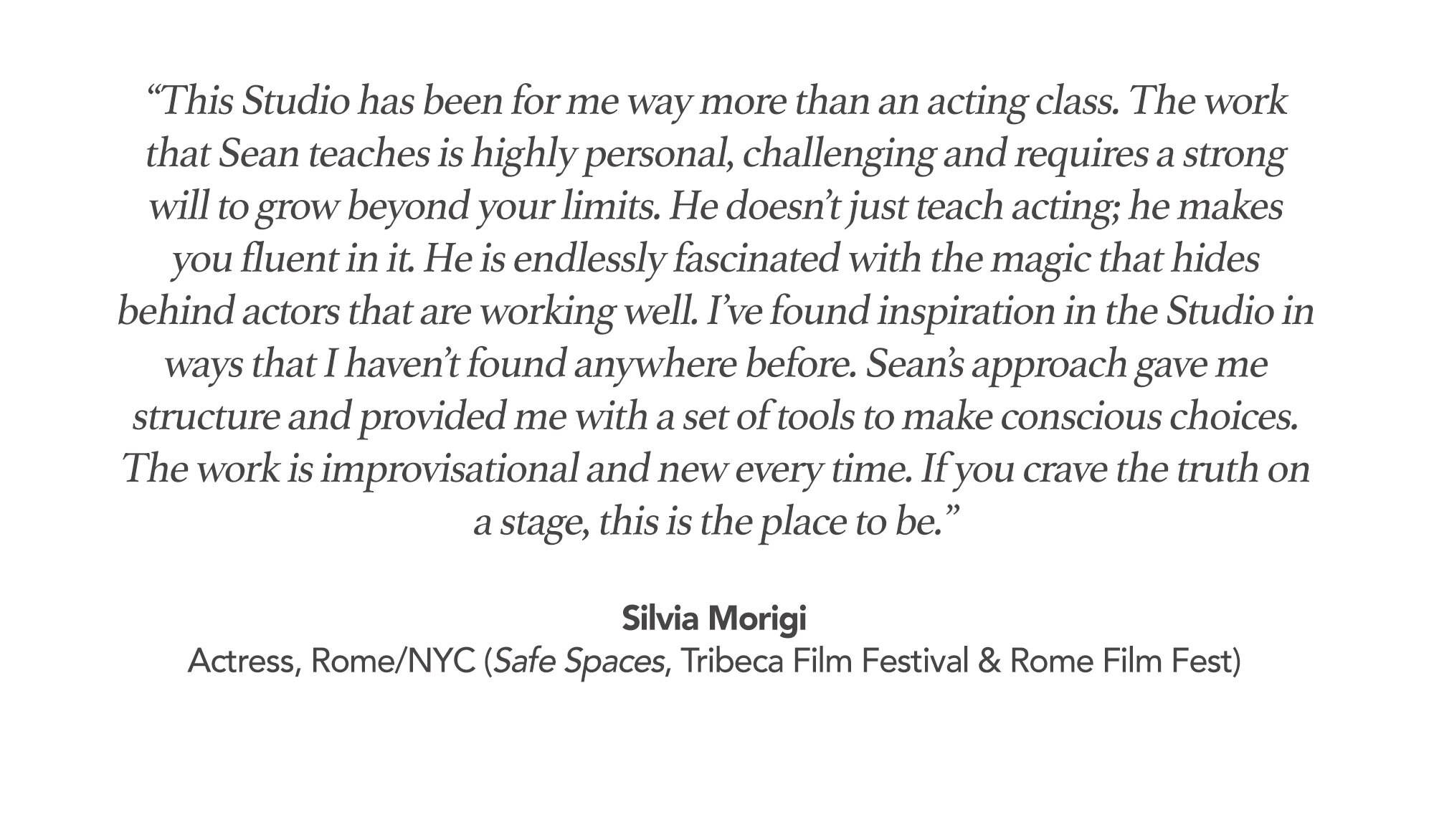
SCRIPT ANALYSIS & INTERPRETATION
“If I believe me, you have no choice.”
Our breakthrough at The Folster Studio in this major area of the actor’s work is the creation of a procedure called Script Inquiry®. Relying heavily on an exercise called Taking It Off the Page he originally learned in private sessions from the late great acting coach Harold Guskin, and fortified through Stella Adler’s Gathering Impressions, Sean grew those approaches into an organic, flowing process that allows the work to stay intuitive and “out of your head”.
At more advanced levels, tools such as The Map, The Simple Reality, Emotional Paraphrasing, Actioning and Inner Imaging are activated not only through analysis but by in-the-moment, intuitive inquiry; not by imposing what “should” be there from the outside but through discovering it from the inside. The levels of this process unfold to comprise the bulk of our way of working in the Studio, as actors tackle each progressive layer through exercises, monologues, scenes and roles.

